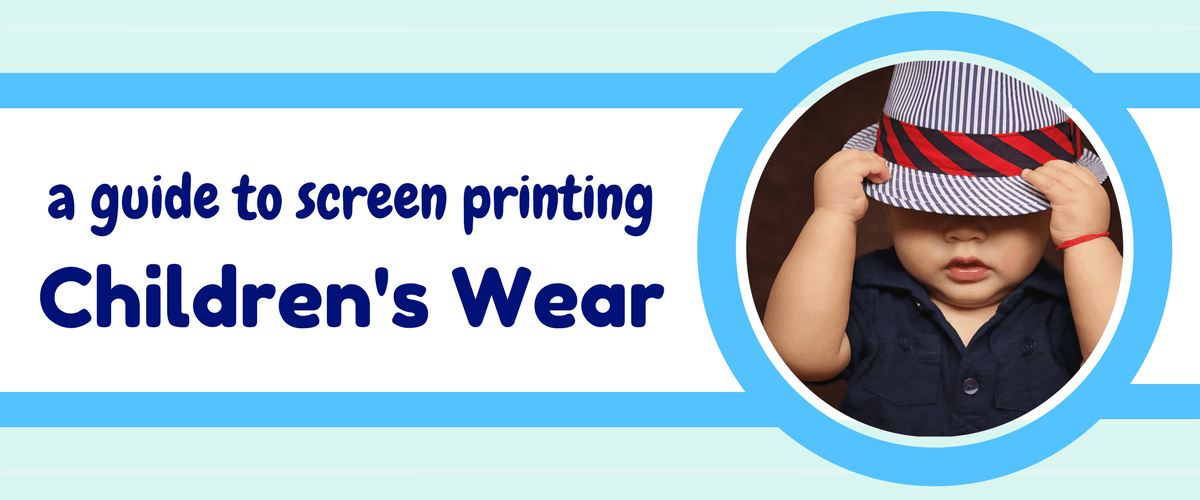

Revolutionizing the screen printing industry through cutting-edge technology and quality service
Anatol Equipment Manufacturing Co.
1429 S Shields Dr
Waukegan, IL 60085


Revolutionizing the screen printing industry through cutting-edge technology and quality service
Anatol Equipment Manufacturing Co.
1429 S Shields Dr
Waukegan, IL 60085

Looking to expand your screen printing product line? Don’t forget about your smallest customers! The children’s wear market is growing and changing by leaps and bounds, however, as parents, grandparents and marketers are looking for trendier, child-sized versions of adult apparel.
For shops that aren’t printing a lot of – or any – children’s apparel, adding a children’s line can help expand sales. There are some extra considerations when it comes to marketing children’s apparel. That includes regulatory and safety guidelines, as well as manufacturing and marketing considerations.
The U.S. Consumer Product Safety Commission has been charged with monitoring product safety for nearly 5 decades. When it comes to children’s screen printed apparel, there are two restrictions printers need to be aware of: Lead and phthalates. Beyond governmental regulations, there are also other safety considerations to be aware of when marketing children’s apparel.
Lead is regulated in apparel that’s manufactured for children who are 12 years old or younger. The total lead content in any children’s product can’t exceed 100 parts per million. For “surface” materials, or materials that could easily be scraped off of a product, the total lead content cannot exceed 90 parts per million.
Phthalates, the plasticizers used to make plastics more flexible, are partially banned from sleepwear, toys and feeding products manufactured for children 3 and younger. That could be a concern if you’re printing on pajamas, bibs, sippy cups or children’s toys like rubber ducks. Banned phthalates include DEHP, DBP, and BBP, while DINP, DIDP and DnOP are banned in the interim.

When it comes to complying with government regulations for children’s apparel, the burden of proof that products don’t contain too high levels of lead and phthalates falls on the person selling the product, and the finished product must be tested by a third-party lab, and a certificate verifying the compliance is needed. It is possible to avoid the need for third-party testing if you obtain certificates from your apparel and ink suppliers that show their products have been third-party tested and meet government requirements.
Beyond government regulations, there are other steps you should take to ensure that the products you’re printing for children are safe. Beware of sequins, beads or other decorations that could be pulled off a children’s garment and pose a choking hazard. Snaps and buttons are also a choking concern, and it’s important to make sure fasteners are securely attached to children’s products. Any drawstrings shouldn’t extend more than 3 inches from the garment, and the draw cords common on fleece apparel should be avoided on children’s apparel because they can pose a strangulation hazard.
The screen printing process for children’s apparel goes beyond taking the artwork you’ve created for adult clothing and putting it down on smaller blue and pink substrates. There are some complications in creating artwork for children’s apparel, and being more creative with substrates and inks can help you to better market children’s wear.
Creating artwork for children’s apparel requires some extra work if you’re looking to print the same designs on child-sized substrates that you print on adult-sized substrates. The artwork will have to be sized in proportion with the smaller substrates, and that smaller artwork likely will need to be reworked. The fine details you print on an adult-sized garment might disappear or become muddled when the art is shrunk down. That might mean creating a simplified version of the art you use on adult garments. Similarly, you might have to adjust the size and spacing of any lettering on children’s prints.
Screen-printing convention has long been to print whimsical designs on pastel or brightly colored cotton t-shirts and sweatshirts to market to kids. But parents are looking for more when it comes to children’s wear. Darker, more sophisticated substrates are becoming popular in children’s wear, as are more artistic and less cartoonish graphics. More and more, parents are looking for miniature versions of adult clothing for their kids, so polo shirts, rugby shirts and vintage-feel t-shirts are becoming more popular for kids.
Also, consider features that make children’s wear more convenient. Stretchy necklines and sleeve cuffs make dressing easier, as do neckline snaps or overlap collars on shirts or bodysuits meant for babies and toddlers.
Children have sensitive skin, and parents are becoming more and more picky about what chemicals their children are coming into contact with. That makes environmentally friendly, water-based inks and inks with a soft hand feel excellent choices for printing on children’s apparel. That said, some things never change, and many children love anything novel. That makes glitter inks, puff inks, sequins and other special-effect inks and embellishments appealing options for children’s screen prints.
There’s a big market for children’s screen printed apparel. When you offer a solid lineup of children’s options, you will find interest in the usual places — such as youth sports teams and souvenir shops — but you’ll likely also find business customers, event promoters and local artists looking to put their logos and artwork on children’s clothing, blankets, backpacks and more. Marketing screen printed apparel for children is just one more way you can expand your offerings to garner larger orders from you existing customers and attract new customers.
Looking for other ways to expand your screen printing product line? Check out these blogs:
Grow Your Screen Printing Business by Expanding Your Product Line
Expanding Your Screen Printing Horizons with Hats and Posters
Tips for Screen Printing on Glass and Ceramic Substrates
Your message was successfully sent!